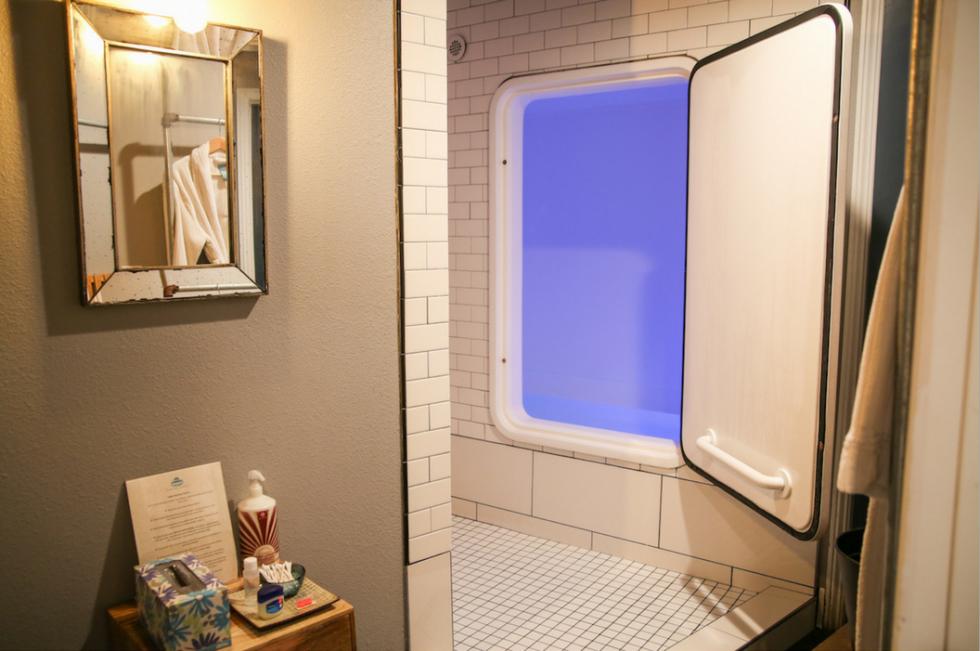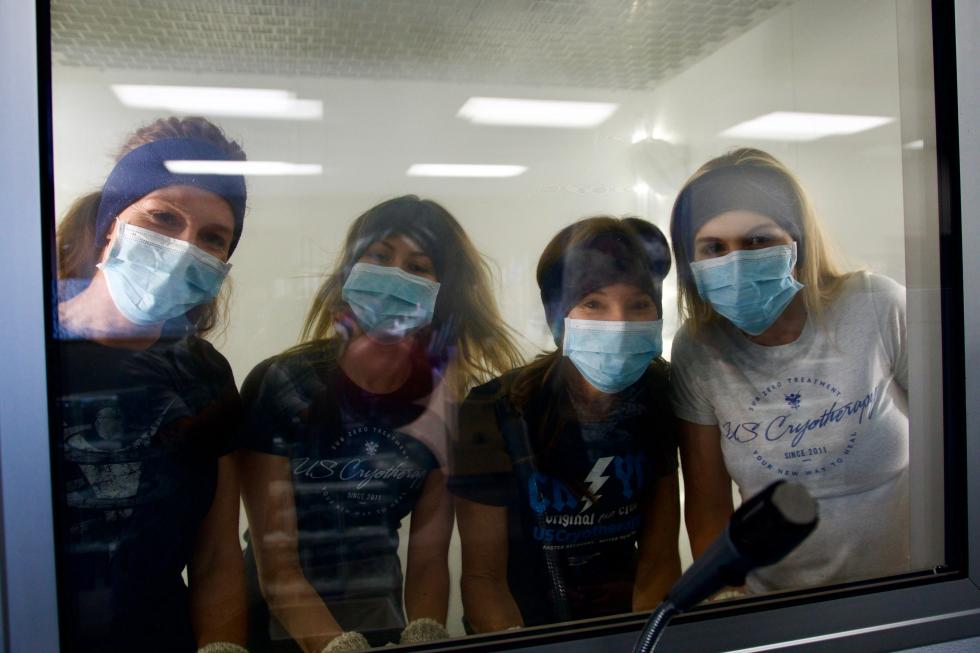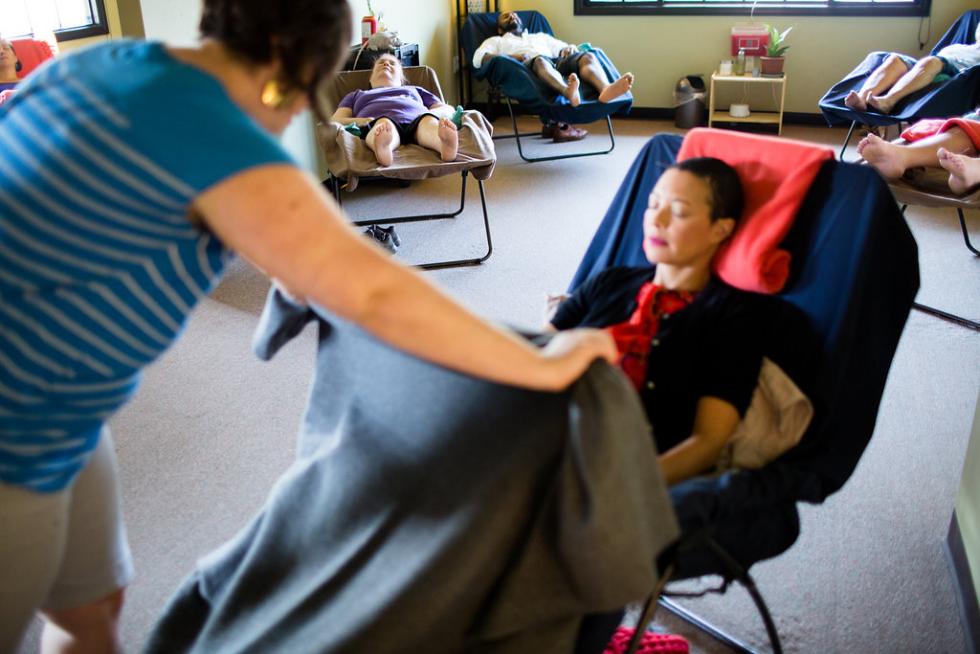In recent years, the Sacramento region has seen the rise of businesses offering alternative approaches to health and wellness such as float centers, cryotherapy services and community acupuncture practices. Many have opened their doors in an effort to counteract the overwhelming stresses — from technological and environmental to physical and societal — that humans face each day.
Yet, one has to wonder: Can the market sustain these types of businesses? With limited U.S.-based research to support the purported health benefits and the inevitable need to demystify niche or alternative services, it can be a daunting task to keep wellness businesses well. The answer for local centers, it seems, revolves around education.
Floating Your Cares Away
The float tanks at Capitol Floats are larger than other pod-like
float tanks on the market. Courtesy of Capitol Floats.

When Capitol Floats owner Ryan Duey first put forth the idea of starting a float center in Sacramento, he was met with resistance from both landlords and potential investors. He says much of that resistance stemmed from a lack of understanding about the practice of floating, and whether a business could be built around a center full of walk-in float tanks. The tanks at Capitol Floats are 8-feet long, 5-feet wide and over 7-feet tall, filled with 10 inches of water and 1,100 pounds of epsom salt.
“There was big talk about where we wanted Sacramento to go, but there was also resistance to going there,” Duey says of the discussions surrounding innovation and new ideas in the city. “I saw that from a landlord perspective and I get it — it’s their property and they have investment in this — but no one to wants be first.”
Related: Float tank business opens in Oak Park
Sacramento didn’t have much in the way of float centers or sensory deprivation tanks, but that was part of the draw for him. “I get to write the script of what floating is in Sacramento,” Duey says. “I get to kind of put my intention behind it and create the culture here.”
It took him over six months of research of buildings and neighborhoods, and setting up investor meetings to find the right location and an investment group that understood his vision. According to Duey, that vision is a success. Construction on Capitol Floats’ Oak Park center began in the fall of 2015 and the center opened its doors in February 2016. Since opening, Duey estimates the center has sold over 11,000 floats. He also says he and his team are in early discussions about a potential second location.
The staff at Capitol Floats are still working to educate current and potential customers, dispel myths and ease reservations people may have about floating. Many of those who have never floated before are concerned about things like claustrophobia, being able to swim and being alone with their thoughts for 60 minutes or more. He says once customers give floating a try, however, they often share stories of reduced stress levels, reduced aches and pains, and improved sleep.
What’s Cooler than Being Cool?
With USCryotherapy’s walk-in chambers, friends can partner up to
get treated at the same time. Courtesy of USCryotherapy.

In 2011, USCryotherapy opened the first stateside cryotherapy therapy center in Roseville. Kevin Kramer, co-owner and chief operating officer, says his father had seen the concept in Europe — primarily in hospital settings — and wanted to bring the technology to the U.S.
USCryotherapy uses electric whole body equipment, which means clients walk into a chamber that treats the entire body with refrigerated cold air. Some of the purported benefits of cryotherapy include muscle healing, pain relief and inflammation reduction.
One of the first challenges starting a cryotherapy center was finding a manufacturer to produce the equipment and, in the beginning, that equipment was coming from Germany. According to Kramer, the equipment was troublesome due to the differences between German and U.S. electrical specifications and other performance issues. “We basically terminated our exclusive distribution agreement and took a year off, funding R&D for our own equipment right here in the Sacramento area,” he says.
Since opening the first center in 2011, USCryotherapy has gone on to open three more company-owned centers and 16 franchised centers across the U.S., — with two locations in the greater Sacramento region, Roseville and Davis, and an Elk Grove location opening soon — which have completed approximately 700,000 treatments. More franchise centers are expected to open in the coming months.
But Kramer acknowledges some challenges in the market. He is tasked with educating consumers on the benefits of treatments at USCryotherapy centers, and has had to differentiate his company’s method from other types of cryotherapy treatments like cooled partial body treatments using liquid nitrogen, which has generated consumer concerns.
Much like Duey says of customers trying out Capitol Floats, Kramer notes USCryotherapy clients tend to become return customers after getting their first treatments. They also share their experiences. “That’s how our business has been growing,” Kramer says. “People become loyal to it because their bodies feel so good.”
Acupuncture: The More the Merrier
Clients at the Sacramento Acupuncture Project are treated in a
common room. Courtesy of Christina Best Photography.

Molly Fread helped launch the Sacramento Acupuncture Project, which was the city’s first community acupuncture center, in October 2015 as an expansion of their two Oakland Acupuncture Project centers. Fread serves as the clinic manager and is a licensed acupuncturist.
While acupuncture is an ancient practice, community acupuncture centers — where treatments are completed in a communal setting at a significantly lower, sliding-scale price point — have only started gaining momentum in the U.S. over the last 15 years.
“Nobody was doing community acupuncture in Sacramento — in this whole huge city,” she says. “So you had a huge gap in care for people in working class and moderate income brackets that could use health care and didn’t have access to this kind of alternative care.”
Though some clients may be hesitant to receive acupuncture treatments in a room with other patients and fear of needles is a common sticking point, Fread says the reception in Sacramento has been overwhelmingly positive. “Since opening we’ve given over 19,000 treatments in just over two years,” says Fread. “In 2017, alone, we’ve given over 10,000. It goes to show when you make something affordable, even if it’s kind of unusual and alternative, people use it.”
The challenges facing the Sacramento Acupuncture Project revolve around being able to serve so many clients. Fread notes she wishes more community acupuncture centers would open in the region, and that it can be difficult to find trained acupuncturists who understand and are willing to practice in the community setting. “I wish it was expanding faster but it does take a certain type of person to be able to work in this environment,” she says, adding it’s much more fast-paced for the acupuncturists than a traditional office-visit setting and a lot of those working in acupuncture aren’t familiar with the concept. “We would love to, in the next couple of years, look at the second location. It comes down to a lot of staffing and being ready to take that leap.”




Comments
I appreciate the Sacramento Yoga center, community style. I will admit that I was a bit apprehensive the first time, not anymore! The environment is very calm and soothing in the rooms, especially right now in winter. And I see Molly as often as I have time. Yes, why are there not more of those wonderful places around the city?